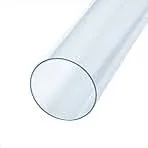Sep . 26, 2024 04:05 Back to list
Versatile Solutions for Pipe Clamp Fittings in Various Applications and Industries
Understanding Pipe Clamp Fittings A Comprehensive Guide
Pipe clamp fittings are essential components in various plumbing and construction applications. They serve a critical function by securing pipes in place, preventing movement and potential damage while ensuring a leak-free system. This article will delve into the importance, types, applicable materials, and installation practices of pipe clamp fittings.
The Importance of Pipe Clamp Fittings
Pipe clamp fittings play a crucial role in maintaining the integrity and functionality of plumbing systems. They are designed to hold pipes firmly to walls, ceilings, or other structures, preventing unnecessary vibrations and movements that could lead to pipe breakage or leakage. Whether in residential, commercial, or industrial settings, these fittings ensure that fluid or gas flow remains uninterrupted, ultimately protecting the system's overall efficiency.
Types of Pipe Clamp Fittings
There are several types of pipe clamp fittings available in the market, each suited for specific applications
1. Standard Pipe Clamps These are the most common fittings, typically made of metal or plastic. They provide a strong grip on pipes and are ideal for general use.
2. Rubber-Lined Clamps These fittings feature a rubber lining that cushions the pipe, reducing wear and vibration. They are perfect for delicate or insulated pipes where extra protection is needed.
3. Adjustable Pipe Clamps These clamps allow the user to modify the size to fit various pipe diameters. Their versatility makes them useful in situations where pipe sizes may vary.
4. Heavy-Duty Clamps Designed for industrial applications, these clamps are constructed from robust materials to support larger pipes and withstand higher pressures. They remain durable even in extreme environments.
Materials Used in Pipe Clamp Fittings
Pipe clamp fittings come in various materials, each offering distinct advantages
pipe clamp fittings

- Stainless Steel Known for its corrosion resistance, stainless steel is an ideal choice for outdoor applications or environments prone to moisture.
- Galvanized Steel This material is coated to prevent rust and is commonly used in plumbing and HVAC systems
.- Plastic Lightweight and resistant to certain chemicals, plastic clamps are often employed in residential plumbing applications.
- Rubber While not usually used alone, rubber is often featured in lined clamps to minimize vibrations and protect the pipe’s surface.
Installation Practices
Installing pipe clamp fittings correctly is crucial for achieving optimal performance. Here are some best practices
1. Choose the Right Size Always select a clamp that matches the diameter of the pipe. A loose fit can lead to movement, while a tight fit can cause damage.
2. Securely Fasten Ensure that all clamps are tightly fastened. Loose clamps can lead to leaks and vibrations that may compromise the integrity of the entire system.
3. Check for Alignment When installing multiple clamps, make sure that pipes are aligned properly to avoid stress that can lead to bends or breaks.
4. Regular Inspection Periodically check the clamps for signs of wear and tear. Maintenance is key to ensuring the longevity of your piping system.
In conclusion, pipe clamp fittings are indispensable tools in the realm of plumbing and construction. By understanding their types, materials, and installation practices, you can ensure a secure and efficient piping system that stands the test of time. Whether you are a professional plumber or a DIY enthusiast, investing time in selecting and installing the right pipe clamps is essential for a successful project.
-
High-Quality PPR Pipes and Fittings Durable ERA PPR & PVC PPR Solutions
NewsJul.08,2025
-
Black HDPE Cutting Board - Durable, Non-Porous & Food Safe HDPE Plastic Cutting Board
NewsJul.08,2025
-
High-Quality CPVC Panel Durable HDPE & PVC Panels Supplier
NewsJul.08,2025
-
Double PE Welding Rod Supplier - High Strength, Durable & Versatile Welding Solutions
NewsJul.07,2025
-
High-Quality PVC-O Pipe Supplier Durable 75mm PVC Pipe & Connections Leading PVC Pipe Company
NewsJul.07,2025
-
HDPE Drainage Pipe Supplier – Durable & Corrosion-Resistant Solutions
NewsJul.06,2025

